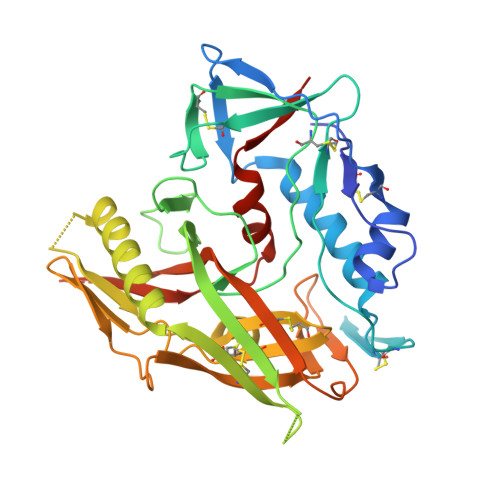Identification of gp120 Residue His105 as a Novel Target for HIV-1 Neutralization by Small-Molecule CD4-Mimics.
Fritschi, C.J., Liang, S., Mohammadi, M., Anang, S., Moraca, F., Chen, J., Madani, N., Sodroski, J.G., Abrams, C.F., Hendrickson, W.A., Smith 3rd, A.B.(2021) ACS Med Chem Lett 12: 1824-1831
- PubMed: 34795873
- DOI: https://doi.org/10.1021/acsmedchemlett.1c00437
- Primary Citation of Related Structures:
7RSX, 7RSY, 7RSZ - PubMed Abstract:
The design and synthesis of butyl chain derivatives at the indane ring 3-position of our lead CD4-mimetic compound BNM-III-170 that inhibits human immunodeficiency virus (HIV-1) infection are reported. Optimization efforts were guided by crystallographic and computational analysis of the small-molecule ligands of the Phe43 cavity of the envelope glycoprotein gp120. Biological evaluation of 11 - 21 revealed that members of this series of CD4-mimetic compounds are able to inhibit HIV-1 viral entry into target cells more potently and with greater breadth compared to BNM-III-170. Crystallographic analysis of the binding pocket of 14 , 16 , and 17 revealed a novel hydrogen bonding interaction between His105 and a primary hydroxyl group on the butyl side chain. Further optimization of this interaction with the His105 residue holds the promise of more potent CD4-mimetic compounds.
- Department of Chemistry, University of Pennsylvania, Philadelphia, Pennsylvania 19104, United States.
Organizational Affiliation:


















